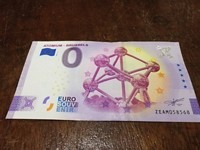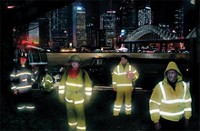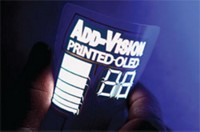Advertisement
Grab your lab coat. Let's get started
Welcome!
Welcome!
Create an account below to get 6 C&EN articles per month, receive newsletters and more - all free.
It seems this is your first time logging in online. Please enter the following information to continue.
As an ACS member you automatically get access to this site. All we need is few more details to create your reading experience.
Not you? Sign in with a different account.
Not you? Sign in with a different account.
ERROR 1
ERROR 1
ERROR 2
ERROR 2
ERROR 2
ERROR 2
ERROR 2
Password and Confirm password must match.
If you have an ACS member number, please enter it here so we can link this account to your membership. (optional)
ERROR 2
ACS values your privacy. By submitting your information, you are gaining access to C&EN and subscribing to our weekly newsletter. We use the information you provide to make your reading experience better, and we will never sell your data to third party members.
Materials
Pigments
This Way To The Egress
by Alexander H. Tullo
October 18, 2004
| A version of this story appeared in
Volume 82, Issue 42
When people think of luminescent pigments, the images that come to mind are likely to be glow-in-the-dark novelties: plastic children's toys or sets of star-shaped stickers placed on dormitory-room ceilings to simulate a starry night.
However, luminescent pigments are a serious business as they increasingly get used to prevent counterfeiting or to keep people safe.
Barry Russell, global business director for specialty additives at Honeywell, says a big growth driver for his firm's Lumilux pigments is authentication. The pigments are used in credit card and passport holograms to prevent fraud or on cigarette tax stamps to catch smugglers. They are also used to create a small mark somewhere inside a purse or other product that can be revealed only by a special light source as a means of discerning knock-off products from the real thing.
"Lots of brand owners are becoming aware of the cost of not having their brands authenticated," Russell says. Many are dealing with fraud that is hard to combat otherwise, thanks to the tendency of infringers to set up shop in places where intellectual property law enforcement is lax.
Another growing market for luminescent pigments is glow-in-the-dark "exit signs" and other forms of egress marking. The signs are visible in fire and blackout conditions. Russell says the market is doubling in size every year as many jurisdictions, such as New York City, start requiring such signage.
Lumilux pigments are based on lattice host materials like zinc sulfide that are doped with rare-earth metals. Honeywell has also rolled out high-performance strontium aluminate-based pigments.
Specialty coatings producer RPM International Inc. is also in the fluorescent pigments business under the well-known Day-Glo brand. However, instead of focusing on secret inks and glow-in-the-dark properties, the Day-Glo unit's emphasis is on fluorescent effects in the optical spectrum. "It is a fun product line because it has many adaptations you can use it for," says RPM's Glenn Hasman, vice president of finance and communications.
Much of the focus at the Day-Glo unit is on fun-and-games applications like toys, printing inks, and plastics. But the company also has applications such as pigments for traffic cones, helmets, and vests used by roadwork crews.
Day-Glo also has been able to find applications such as fluorescent markers for forest-fire fighting agents, so airplane pilots know exactly where they have dropped their materials.
However, the application that Hasman is most excited about is Chalk It - a line of fluorescent chalks kids can use for hopscotch games.






Join the conversation
Contact the reporter
Submit a Letter to the Editor for publication
Engage with us on Twitter